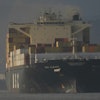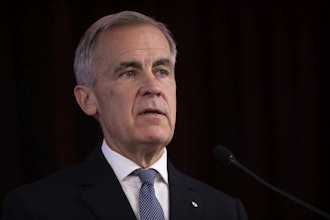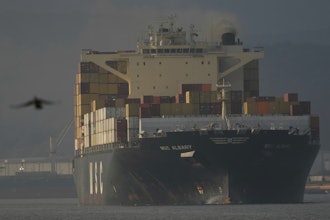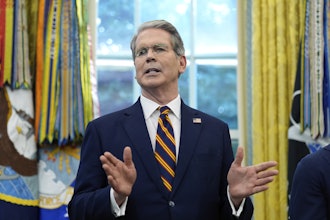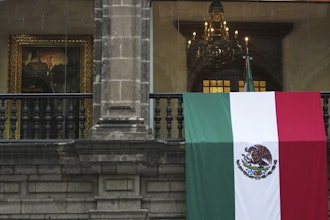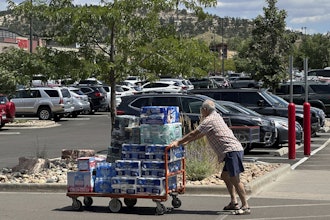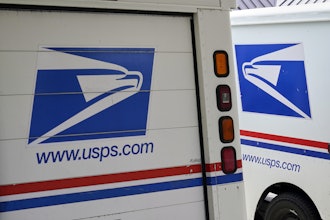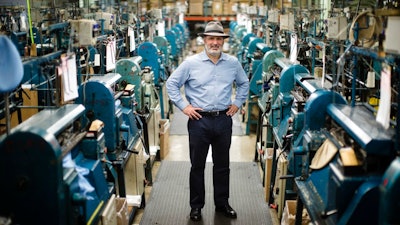
ADAMSTOWN, Pa. (AP) — If home is where you hang your hat, Kangol is struggling to afford its pricey new U.S. digs.
When the famous hat brand worn by celebrities like Samuel L. Jackson, Brad Pitt and Gwen Stefani moved into a Pennsylvania factory last year from China, executives with the Bollman Hat Co. billed it as an effort to create U.S. manufacturing jobs.
But as labor costs went up, profits went down. Way down. The 149-year-old company behind Kangol says it's losing money on every kangaroo-logo cap knitted at its factory in Adamstown, 60 miles west of Philadelphia.
"It has been certainly a bigger challenge than what we could've ever dreamed," said Don Rongione, Bollman's fedora-wearing president and CEO.
The nation's oldest hatmaker expects a relatively quick turnaround once U.S. workers get better at making the popular Kangol caps. But Bollman's early struggles with Kangol illustrate why the labor-intensive garment industry left the United States in the first place.
Employment is down 85 percent since 1990 — the biggest decline of any manufacturing sector — as cost-cutting apparel companies shifted production to Asia in search of cheaper labor. Bollman spends about $11 an hour per worker in Pennsylvania vs. $2.60 in China.
So why move?
In an industry where trends come and go quickly, "it's incredibly important to incorporate speed into the delivery of the product," Rongione said.
Other apparel companies are also trying to be more nimble. U.S. apparel production has increased 50 percent since 2009, according to the American Apparel & Footwear Association, as some footwear and clothing makers decided to accept higher labor costs in exchange for greater inventory control and proximity to U.S. customers.
KEEN, for example, began assembling footwear at a plant in Portland, Oregon, in 2010. Sportswear giant Under Armour opened a high-tech facility in Baltimore last year.
"Obviously, if you have a plant in the United States, it's much easier to respond to trends, produce small runs and get product to market really quickly," said Nate Herman, the trade group's senior vice president of supply chain.
Last year, for the first time in decades, the number of manufacturing jobs created by U.S. companies that moved operations back to the nation and by foreign companies investing in America exceeded the number of jobs lost by companies moving overseas, according to the Reshoring Initiative, a nonprofit set up to bring factory jobs back to the United States.
Yet the U.S. garment industry's production gains also show why President Donald Trump's campaign pledge to return manufacturing jobs to the U.S. could prove difficult. Increased automation is making it cheaper to sew and knit in the U.S. but requires fewer workers. So, even as apparel makers crank out more U.S.-made shirts and shoes, the industry is losing more jobs than it's creating. Employment stood at more than 131,000 workers last year, down from a high of 1.4 million in 1973.
Moreover, more than 97 percent of America's wardrobe still comes from abroad.
"It's not going to be what it once was," said Steven Frumkin, of the Fashion Institute of Technology in New York. "We're never going to employ as many people because of efficiencies and equipment."
Bollman is betting it can succeed with U.S. workers — and by making Kangol, its most important brand, the old-fashioned way.
The employee-owned company raised more than $100,000 through a Kickstarter campaign to ship dozens of knitting machines from China to Pennsylvania, then got to work refurbishing the ancient, clattering workhorses that have been knitting the fabric used in Kangol caps for nearly 80 years. American workers also had to learn how to sew, shape and embroider the distinctive headwear, a popular style of which, the Wool 504, retails for $48.
Nearly a year later, Bollman's overall cost per hat is still twice as high as it was in Asia, partly because the Pennsylvania crew can't yet produce as many hats in a day as their more experienced counterparts at the now-shuttered factory in Panyu, in southern China. But the cost per hat was three times as high initially, and the company says it expects continued improvement.
Inside Bollman's 19th century, red-brick factory in Pennsylvania Dutch country, Amaryllis Garman, 38, carefully places a piece of knitted fabric on a machine that joins both ends to form the familiar Kangol flat cap, taking care to ensure a straight line. The job requires patience and hand-eye coordination, and comes with a steep learning curve.
When Garman started, she could make 10 hats a day. She's up to about 250 now and hopes to become still more efficient.
"I was ready to give up," Garman said with a rueful laugh. "Very difficult, but once you accomplish it, it's a good feeling."
Bollman has spent more than $1 million to shift production to Pennsylvania, putting a financial strain on a company whose brand lineup also includes Helen Kaminski and Country Gentleman. There was no profit sharing in 2016, and, for the first time in 31 years, the company did not make a contribution to its employee stock ownership plan.
The Adamstown factory is responsible for about 20 percent of Kangol production, with the rest coming from plants in England, Italy, Taiwan, China and Vietnam.
The venerable hatmaker, which has produced just about every style over its long history, from trilbies and pork pies to bowlers and berets, is no stranger to adversity. Foreign competition forced painful layoffs at the Pennsylvania factory last decade as Bollman's domestic production declined from 3.2 million hats in 2005 to about 460,000 last year. The experience prompted Rongione to start American Made Matters, an advocacy group that encourages consumers to buy U.S.-made goods.
Bollman acquired Kangol, an English brand that gained cachet in the U.S. when hip-hop pioneers like Run-D.M.C. and LL Cool J began sporting it, in 2001. By then, production had already moved to China.
Rongione said Bollman has to start making money on its U.S.-made Kangol headwear or it'll eventually have to ship production back overseas.
But the CEO said he remains optimistic.
"This is not yet a success story," Rongione said, "but we have great confidence we're going to get there. ... This is near and dear to our hearts."



